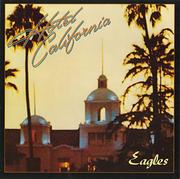Garden of Earthly Delights: Analysis & Meaning of the Bosch Painting
BY K Shabi PUBLISHED 09 Apr 2021
A giant oil-on-oak painting measuring more than 7 by 12 feet, The Garden of Earthly Delights (1490-1510) was painted during the Renaissance around the turn of the sixteenth century by Dutch artist Hieronymus Bosch and is still one of the most famous and mysterious works of art in the world today. What is the true meaning of Bosch's iconic yet terrifying painting? A thorough analysis reveals the religious and secular meaning of The Garden of Earthly Delights, a painting with strangely surreal, modern overtones. What is the hidden meaning of The Garden of Earthly Delights? Can we really find modern significance in any interpretation of this mysterious work of art?

The Hidden Meaning of The Garden of Earthly Delights
It can sometimes be hard to find modern-day applications for old, religious art painted so long ago, but there is something unique and oddly prescient about the art of Hieronymus Bosch and The Garden of Earthly Delights in particular. The term "Boschian" remains in use even today, describing the overload of fantastic details Bosch is still famous for. Not one to keep things simple, Bosch uses the Biblical creation story as a jumping off point and then weaves in lots of weird tangents, side stories and perplexing alien imagery along the way. In fact, Bosch's art is so curious and out there that some have even wondered if he painted under the influence of hallucinogenic drugs. Bosch lived and worked hundreds of years before the Surrealist art movement of the twentieth century, but the often dreamlike and bizarre imagery of his art led André Breton to identify him as a kind of protosurrealist, or a "grandfather" of Surrealism. Famous Surrealists Salvador Dali and Joan Miró were also fans of Bosch's strange and wonderful art.
The Garden of Earthly Delights: Leonardo DiCaprio's Interpretation
In the environmental documentary Before the Flood (2016), actor Leonardo DiCaprio discusses the lasting impact that Bosch's painting had on him as a child, when it was hung as a poster in his childhood bedroom. "If you look at these panels long enough, they start to tell a story," he states pointedly. What is the true meaning of The Garden of Earthly Delights by Hieronymus Bosch? Why are we still fascinated by this curious painting, even centuries after it was painted?
The Garden of Earthly Delights by Hieronymus Bosch: Analysis of the Painting
Very little is known about the life of the artist Hieronymus Bosch. Painted sometime in the middle of his life, The Garden of Earthly Delights is arguably his most famous and most ambitious work of art. The painting is a triptych, a form of art that was popular during the early Christian period, when Bosch lived and worked. Derived from the Greek triptychos, meaning "having three folds," a triptych is a large painting divided into three sections or scenes and is meant to be read linearly, from left to right like a line of text in a book. Bosch painted 16 triptychs throughout his career, including the similarly themed The Last Judgment and The Haywain Triptych. Like most art from the Middle Ages, Bosch's triptychs all center around — though at times quite loosely — religious themes and Biblical imagery.

First Panel: Heaven? God's Creation of Man in the Garden of Eden
Working from left to right, Bosch begins his tale simply in the first panel of The Garden of Earthly Delights. A well-known story, Adam and Eve relax peacefully in the Garden of Eden bestowed to them by God in Genesis 2. The couple looks innocent and content in the lush green Paradise, the perfect pastoral setting providing them with everything they need. Is this Heaven? Not quite. At their feet, carnivorous creatures engage in a mostly harmonious but earthly circle of life, with the bigger ones feasting on the smaller rodents scurrying about. Adam doesn't pay attention to them, totally transfixed and in awe of the presence of the deity, but Eve noticeably gazes down, distracted by the animals below. Is there already trouble in Paradise? Maybe it looks a little boring.
Second Panel: Earth, The Garden of Earthly Delights
Still verdant and green, the garden scene transforms dramatically in the central and largest panel, The Garden of Earthly Delights, from which the title of the painting derives. In Genesis 3, Adam and Eve exit the Garden of Eden and must find a new home. In contrast with the divine simplicity of the first panel, the center panel is busy, full of life and energy. As DiCaprio explained, "The second panel is where it starts to become more interesting." In the center section, there is more of everything: more space, more people, more animals — more going on all around. Here the simplicity and calm tranquility of the first panel gives way to an exuberant, crowded party. Excess is the general theme.

Though the second panel is more interesting than the first, in Bosch's world more does not necessarily mean better. As DiCaprio points out, this is where the deadly sins start to infuse their way into the painting, though subtly. The crowds of naked people frolic in a bacchanalian free-for-all with carefree abandon. Life in the Garden looks like fun, but Bosch represents the underlying chaos in the Garden using the oddest of visual metaphors. Unlike the first panel, there is no more clear hierarchy or delineation of order here; the natural world of humans, animals and vegetation are all mixed together in the same jumbled sprawl. Throughout the center panel, Bosch seems to capture the revelers in the middle of some curious metamorphosis, transforming from human into fantastic hybrids: a berry boy, a fish girl. What is the meaning?
Bosch's Garden Painting Explained: the Forbidden Fruit Symbolism
No party is complete without refreshments. Everywhere, the crowd carelessly feasts on the garden's abundant fruit. Is this the forbidden fruit? In the Biblical creation story, eating of the forbidden fruit from the Tree of the Knowledge of Good and Evil ultimately led to the Fall of Man as described in Genesis. While Bosch likely intended to make that Biblical allusion, for Leonardo DiCaprio this fruit is literally just fruit with no religious hidden meaning or subtext. To him, it simply symbolizes "the fruits of what this environment's given us," as he explained to Rolling Stone. For him, the painting has a modern application and meaning beyond what the artist may have originally intended. Looking at the painting as symbolic of our world today, for DiCaprio the worst offense in The Garden of Earthly Delights is unsustainability and taking our environment and its natural resources for granted through excess, wastefulness and overconsumption.

Last Panel: Hell in Bosch's The Garden of Earthly Delights
Things get dark and very ugly in the painting’s third and final panel. The garden has once again transformed into what DiCaprio calls "nightmarish" and a "burnt-down apocalypse." While the first two panels are sunny and green, the last panel is contrastingly gloomy, maybe taking place at night or perhaps even subterranean, underground. Is this one of Dante’s circles of Hell? Remnants of the party and its symbols of vice — playing cards, a gambling dice — are strewn about, discarded. Once animated and carefree, the people now look distraught, tired and worn out after a long night.
Again, Bosch illustrates the chaos and disorder of this place with fantastic figures caught in between two states of being. The surreal hybrids of the second panel looked mostly innocent and even comical in their appearance, but in the last panel they take on a monstrous quality with remarkably religious overtones. Here a pig wears a nun's habit. Next to her, a reptilian critter crouches, its impish face disguised in a knight’s helmet. Beyond, a papal birdman devours a person without blinking an eye. Are these weird creatures Bosch’s demons?
The Garden of Earthly Delights: History & the Protestant Reformation
A religious artist, Bosch most likely intended these nightmarish figures and the painting as a whole to function as a harsh and pointed condemnation of the corruption he saw happening within the Roman Catholic Church at the time. The musical instruments strewn about also point to this: at this time, music, like all art, was reserved for praising God, but here we see it degraded and brought down. Painted around the turn of the sixteenth century, Bosch completed The Garden of Earthly Delights not long before the beginning of the Protestant Reformation in 1517, when Martin Luther nailed the 95 Theses to the church door in Wittenburg. Did the same forces that led to the Reformation inspire Bosch to paint his grandiose and scathing masterpiece?
The Modern Meaning of The Garden of Earthly Delights: The Environment & Climate Change
What is the meaning of The Garden of Earthly Delights by Hieronymus Bosch? As modern viewers, what can we take away from this mysterious piece of art? Forming a strictly religious or moralistic analysis of this famous painting is not very difficult to do, but there is so much detail and and content contained within The Garden of Earthly Delights that the painting defies a simple, straightforward interpretation. The painting's openness to analysis is perhaps its most modern aspect. While Bosch may have been setting his sights on the hypocrisies of the Church of his day, like Leonardo DiCaprio we can still analyze the painting from a twenty-first century perspective in secular, earthly terms. As an environmentalist, DiCaprio interprets Bosch's painting as a warning and cautionary tale about human-caused climate change. Though you can analyze this work of art from many different angles and viewpoints, ultimately the meaning of The Garden of Earthly Delights comes down to the importance of the choices we make, both as individuals and as a society, and can determine our fate. What we do really matters.







